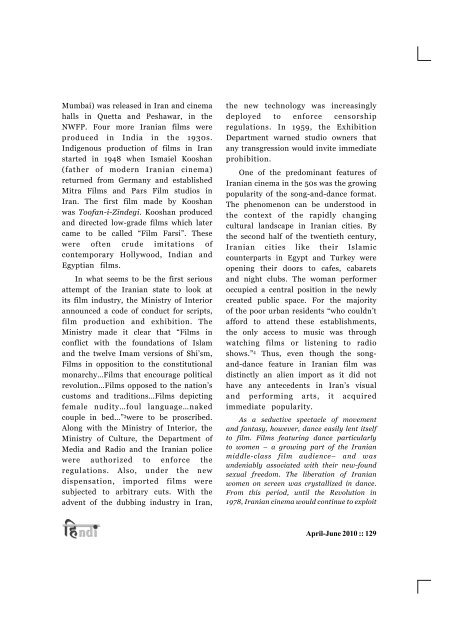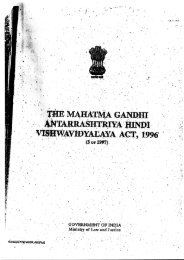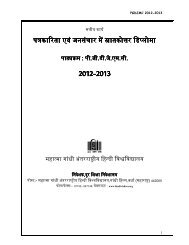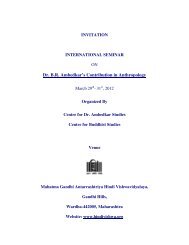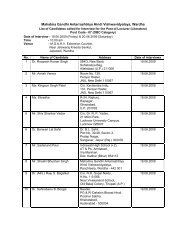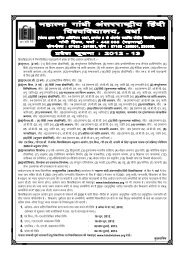Mamta Kalia
Mamta Kalia
Mamta Kalia
Create successful ePaper yourself
Turn your PDF publications into a flip-book with our unique Google optimized e-Paper software.
Mumbai) was released in Iran and cinema<br />
halls in Quetta and Peshawar, in the<br />
NWFP. Four more Iranian films were<br />
produced in India in the 1930s.<br />
Indigenous production of films in Iran<br />
started in 1948 when Ismaiel Kooshan<br />
(father of modern Iranian cinema)<br />
returned from Germany and established<br />
Mitra Films and Pars Film studios in<br />
Iran. The first film made by Kooshan<br />
was Toofan-i-Zindegi. Kooshan produced<br />
and directed low-grade films which later<br />
came to be called “Film Farsi”. These<br />
were often crude imitations of<br />
contemporary Hollywood, Indian and<br />
Egyptian films.<br />
In what seems to be the first serious<br />
attempt of the Iranian state to look at<br />
its film industry, the Ministry of Interior<br />
announced a code of conduct for scripts,<br />
film production and exhibition. The<br />
Ministry made it clear that “Films in<br />
conflict with the foundations of Islam<br />
and the twelve Imam versions of Shi’sm,<br />
Films in opposition to the constitutional<br />
monarchy…Films that encourage political<br />
revolution…Films opposed to the nation’s<br />
customs and traditions…Films depicting<br />
female nudity…foul language…naked<br />
couple in bed…” 3 were to be proscribed.<br />
Along with the Ministry of Interior, the<br />
Ministry of Culture, the Department of<br />
Media and Radio and the Iranian police<br />
were authorized to enforce the<br />
regulations. Also, under the new<br />
dispensation, imported films were<br />
subjected to arbitrary cuts. With the<br />
advent of the dubbing industry in Iran,<br />
the new technology was increasingly<br />
deployed to enforce censorship<br />
regulations. In 1959, the Exhibition<br />
Department warned studio owners that<br />
any transgression would invite immediate<br />
prohibition.<br />
One of the predominant features of<br />
Iranian cinema in the 50s was the growing<br />
popularity of the song-and-dance format.<br />
The phenomenon can be understood in<br />
the context of the rapidly changing<br />
cultural landscape in Iranian cities. By<br />
the second half of the twentieth century,<br />
Iranian cities like their Islamic<br />
counterparts in Egypt and Turkey were<br />
opening their doors to cafes, cabarets<br />
and night clubs. The woman performer<br />
occupied a central position in the newly<br />
created public space. For the majority<br />
of the poor urban residents “who couldn’t<br />
afford to attend these establishments,<br />
the only access to music was through<br />
watching films or listening to radio<br />
shows.” 4 Thus, even though the songand-dance<br />
feature in Iranian film was<br />
distinctly an alien import as it did not<br />
have any antecedents in Iran’s visual<br />
and performing arts, it acquired<br />
immediate popularity.<br />
As a seductive spectacle of movement<br />
and fantasy, however, dance easily lent itself<br />
to film. Films featuring dance particularly<br />
to women – a growing part of the Iranian<br />
middle-class film audience– and was<br />
undeniably associated with their new-found<br />
sexual freedom. The liberation of Iranian<br />
women on screen was crystallized in dance.<br />
From this period, until the Revolution in<br />
1978, Iranian cinema would continue to exploit<br />
April-June 2010 :: 129


